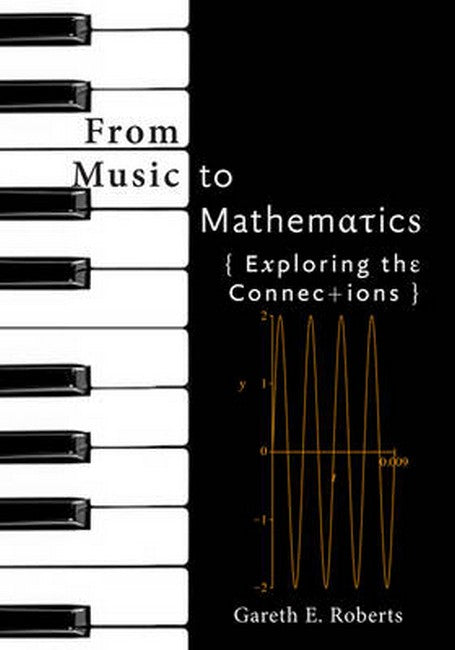Preface
Acknowledgments
Introduction
1. Rhythm
1.1. Musical Notation and a Geometric Property
1.1.1. Duration
1.1.2. Dots
1.2. Time Signatures
1.2.1. Musical examples
1.2.2. Rhythmic repetition
1.3. Polyrhythmic Music
1.3.1. The least common multiple
1.3.2. Musical examples
1.4. A Connection with Sanskrit Poetry
References for Chapter 1
2. Introduction to Music Theory
2.1. Musical Notation
2.1.1. The common clefs
2.1.2. The piano keyboard
2.2. Scales
2.2.1. Chromatic scale
2.2.2. Whole-tone scale
2.2.3. Major scales
2.2.4. Minor scales
2.2.5. Why are there 12 major scales?
2.3. Intervals and Chords
2.3.1. Major and perfect intervals
2.3.2. Minor intervals and the tritone
2.3.3. Chords
2.4. Tonality, Key Signatures, and the Circle of Fifths
2.4.1. The critical tonic-dominant relationship
2.4.2. Key signatures
2.4.3. The circle of fifths
2.4.4. Transposition
2.4.5. The evolution of polyphony
References for Chapter 2
3. The Science of Sound
3.1. How We Hear
3.1.1. The magnificent ear-brain system
3.2. Attributes of Sound
3.2.1. Loudness and decibels
3.2.2. Frequency
3.3. Sine Waves
3.3.1. The sine function
3.3.2. Graphing sinusoids
3.3.3. The harmonic oscillator
3.4. Understanding Pitch
3.4.1. Residue pitch
3.4.2. A vibrating string
3.4.3. The overtone series
3.4.4. The starting transient
3.4.5. Resonance and beats
3.5. The Monochord Lab
References for Chapter 3
4. Tuning and Temperament
4.1. The Pythagorean Scale
4.1.1. Consonance and integer ratios
4.1.2. The spiral of fifths
4.1.3. The overtone series revisited
4.2. Just Intonation
4.2.1. Problems with just intonation
4.2.2. Major versus minor
4.3. Equal Temperament
4.3.1. A conundrum and a compromise
4.3.2. Rational and irrational numbers
4.3.3. Cents
4.4. Comparing the Three Systems
4.5. Strähle's Guitar
4.5.1. An ingenious construction
4.5.2. Continued fractions
4.5.3. On the accuracy of Strähle's method
4.6. Alternative Tuning Systems
4.6.1. The significance of log2(3/2)
4.6.2. Meantone scales
4.6.3. Other equally tempered scales
References for Chapter 4
5. Musical Group Theory
5.1. Symmetry in Music
5.1.1. Symmetric transformations
5.1.2. Inversions
5.1.3. Other examples
5.2. The Bartók Controversy
5.2.1. The Fibonacci numbers and nature
5.2.2. The golden ratio
5.2.3. Music for Strings, Percussion and Celesta
5.3. Group Theory
5.3.1. Some examples of groups
5.3.2. Multiplication tables
5.3.3. Symmetries of the square
5.3.4. The musical subgroup of D4
References for Chapter 5
6. Change Ringing
6.1. Basic Theory, Practice, and Examples
6.1.1. Nomenclature
6.1.2. Rules of an extent
6.1.3. Three bells
6.1.4. The number of permissible moves
6.1.5. Example
6.1.6. Example
6.2. Group Theory Revisited
6.2.1. The symmetric group Sn
6.2.2. The dihedral group revisited
6.2.3. Ringing the cosets
6.2.4. Example
References for Chapter 6
7. Twelve-Tone Music
7.1. Schoenberg's Twelve-Tone Method of Composition
7.1.1. Notation and terminology
7.1.2. The tone row matrix
7.2. Schoenberg's Suite für Klavier, Op. 25
7.3. Tone Row Invariance
7.3.1. Using numbers instead of pitches
7.3.2. Further analysis
7.3.3. Tritone symmetry
7.3.4. The number of distinct tone rows
7.3.5. Twelve-tone music and group theory
References for Chapter 7
8. Mathematical Modern Music
8.1. Sir Peter Maxwell Davies
8.1.1. Magic squares
8.1.2. Some examples
8.1.3. The magic constant
8.1.4. A Mirror of Whitening Light
8.2. Steve Reich
8.2.1. Clapping Music
8.2.2. Phase shifts
8.3. Xenakis
8.3.1. A Greek architect
8.3.2. Metastasis and the Philips Pavilion
8.3.3. Pithoprakta
8.4. Final Project
8.4. References for Chapter 8
Credits
Index
Request Academic Copy
Please copy the ISBN for submitting review copy form
Description
""The fact that most of the aspects of music discussed seem to be relatively peripheral to the immediate experience of music emphasises that nobody has yet provided a convincing justification for the universal belief that ""mathematics and music go together"". Recommended to anyone with an interest in the precise details of both the music and the mathematics.""

